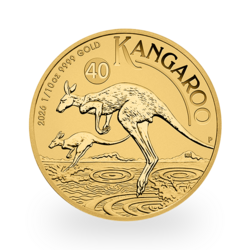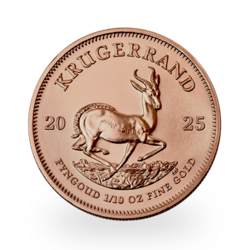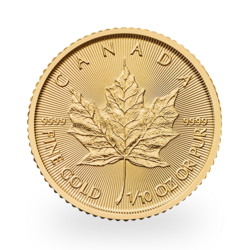In an article published in January, I predicted that the dollar would continue to soar until at least the middle of the year, before starting to fall. Trump's aggressive economic stance was bound to push the dollar higher, making investing in the United States so attractive. But this analysis was confronted by an anomalous phenomenon: the end of the dollar's appeal in times of crisis. This change shows that a shift in the international monetary order is underway. It could signal the final crisis of the American currency.
With Trump waging a trade war, foreign companies have every interest in setting up operations in the United States. This not only enables them to avoid tariffs, but also to benefit from subsidies introduced under the Biden administration and still in force. Several multinationals, including L'Oréal, Volkswagen and LVMH, have made repeated statements to this effect.
These relocations to the USA are attracting new foreign capital. At the same time, global uncertainty is reinforcing this influx, as investors seek to protect themselves financially by turning to dollar-denominated assets, perceived as the safest in the world. This dynamic should logically strengthen the US currency.
And yet, for several weeks now, the dollar has been falling. It has even recorded its biggest decline in four years. The US markets are experiencing a simultaneous sell-off in equities and bonds, which is dragging the dollar down. Even technology indexes, which had been on a roll, suffered considerable losses.
At first glance, one might attribute the dollar's evolution to temporary phenomena: threats against countries seeking to distance themselves from the US financial system (with 100% tariffs), Trump's repeated attacks on the Fed's independence, or the risks of interference in foreign affairs. Yet the greenback's loss of appeal comes as a surprise, all the more so as the trade war waged by the American president should, in theory, be pushing the greenback higher. Tariffs generally support the currency of the country imposing them. By reducing demand for imports, the United States limits the exchange of dollars for foreign currencies, which tends to lower demand for the latter and strengthen the dollar's relative value. However, for the US currency to rise sharply, as in the past, the tariffs must remain in force for an extended period. Donald Trump recently backtracked on some of his statements.
International investors are also beginning to doubt the strength of the US economy. Inflation remains persistent and could stabilize at around 3% by the end of the year, putting the Fed in a tricky position. Moreover, fiscal programs diverge markedly between the US and other major economies. While Trump is promising relatively modest fiscal support, China and Europe are preparing to step up public spending, even though they are both going through very different crises.
The stakes are high. All these phenomena are part of a continuum of authoritarian measures applied by the United States for several decades - from the extraterritoriality of American law to unilateral sanctions targeting states arbitrarily designated as pariahs, in the image of Iran in 2014, to the freezing of Russian assets in 2022. The Trump administration's offensive attitude only amplifies these tensions. Currency is based on confidence; if this erodes, monetary hegemony can topple. We're already seeing this with the global trend of de-dollarisation and Germany's recent decision to repatriate its gold from the United States.
All destruction carries with it the seeds of new foundations. Just as the world is becoming multipolar, so financial initiatives tend to multiply - whether in the form of cross-border programs (in China, Russia...whose capacity is becoming very powerful), the emergence of new currencies in international exchanges (rupees, yuan, etc.), or gas-backed contracts, oil transactions in currencies other than the dollar, or the joint development of central bank digital currencies. On this last point, the Bank for International Settlements has withdrawn from the mBridge project - which it itself initiated after the health crisis - in favor of countries such as China and others (Thailand, Saudi Arabia, United Arab Emirates, etc.). If such an initiative were to be deployed on a large scale, it would represent a serious threat to the domination of the American financial system.
Above all, there is one major monetary uncertainty: the place gold will occupy in tomorrow's international financial system. As explained in previous articles, central banks are buying gold at a historic pace, as the polycrisis we are experiencing and the return of sovereignty create a heightened interest in independent assets. Gold, as a secular asset, plays a role that nobody can measure today.
Of course, the dollar remains the world's leading currency. More than half of all trade is denominated in US currency, nearly 70% of financial transactions and 58% of foreign exchange reserves are also held in dollars, even though US GDP only represents around a quarter of world income. But this hegemony is weakening. Above all, American military power is being confronted by the strength of the Sino-Russian axis, which is making unprecedented investments in technology. Monetary and military domination, intimately linked, are the sine qua non for a country to retain its status as the world's leading power. This is how Italy dominated the world during the late Middle Ages, the Netherlands during the Renaissance, England from the 19th century onwards...
In any case, Trump will seek to save the dollar. This could be achieved through aggressive rate cuts, as demanded by the American president to the Fed, and the simultaneous injection of dollar liquidity abroad. Such a policy would increase global demand for dollars, thereby bolstering the dollar's value, but would also risk boosting domestic inflation.
The U.S. is therefore preparing itself with various solutions: the integration of bitcoin into its reserves (in case its role in the international financial system expands), or the global development of stablecoins backed by the dollar (for transactions without U.S. regulatory constraints and to attract foreign investors). The country also officially remains the world's largest holder of gold.
This monetary strategy, which is now coupled with a desire for reindustrialization, appears to be a model of resistance in the face of major historical dynamics. Trump intends to preserve American hegemony at all costs. But the dollar's current fall, in a period of crisis, shows that its evolution is now beyond political control.
History is repeating itself. At the end of the 19th century, American industrial factories overtook British ones thanks to unrivalled tariffs. Over the past two decades, China has gradually asserted itself as the new industrial power, setting itself up as a veritable workshop of the world. However, this does not guarantee that it will become the world's leading power. Its political model limits this ambition: the absence of democracy imposes strict controls on capital movements, and despite its integration into the market economy, the country remains closed to the rest of the world. However, the current dollar crisis could mark an acceleration of the American decline...
Reproduction, in whole or in part, is authorized as long as it includes all the text hyperlinks and a link back to the original source.
The information contained in this article is for information purposes only and does not constitute investment advice or a recommendation to buy or sell.
